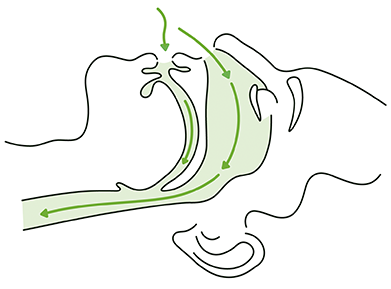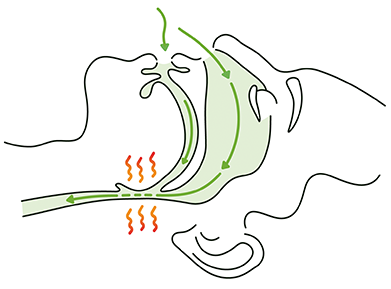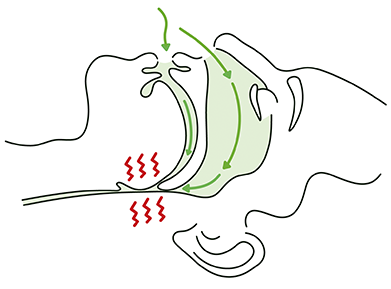Obstructive sleep apnea (OSA) is a common disorder that causes snoring and breathing pauses during sleep. These breathing pauses may occur 30 times or more an hour. As a result, the quality of sleep suffers, making patients tired during the day. On top of that, life partners are often suffering too as loud and persistent snoring can keep him or her awake and take a toll on his or her well-being.
Symptoms
The most obvious sign of obstructive sleep apnea is chronic, loud, and ongoing snoring. There is usually, too, persistent sleepiness during the day, including while at work or driving. This may cause the sufferer to doze off during periods of inactivity. Other symptoms include morning headaches, waking frequently throughout night, difficulty concentrating and remembering, psychological problems such as depression or mood changes, and sore throat or dry mouth upon waking.
- Snoring that is loud and/or gasping
- Tiredness, fatigue, daytime sleepiness
- Sleep cessation observed by others
- Sexual dysfunction
- Weight gain
- Irritability, moodiness, depression
- Memory, concentration, learning problems
- Waking with headache, sore/dry throat, or gasping sensation
- Recurrent awakenings or insomnia
Obstructive sleep apnea risk factors
Fragmented sleep such as that induced by obstructive sleep apnea is the most common cause of daytime sleepiness and issues related to sleep deprivation, including problems with memory, reaction time, and concentration. OSA may also lead to serious illnesses due to its reduction of oxygen levels. This combination of disturbed sleep and oxygen starvation may contribute to ailments including hypertension, heart disease, stroke, diabetes, sexual dysfunction, and depression, plus a significantly higher risk of accidents, including those in the workplace and while driving.
Normal

Snoring

OSA

With normal breathing, which supports the restorative sleep that is so important to human health and well being, air flows freely through the upper airway. There is no obstruction to hinder breathing.
Snoring is caused by partial obstruction of the upper airway when the muscles that normally keep it open relax and the soft tissue vibrates during deep sleep. It is very common and generally does not cause sleep interruptions.
Obstructive sleep apnea exists when the airway becomes blocked to the extent that it causes pauses in breathing and impaired sleep quality.
Untreated obstructive sleep apnea can increase the risk of: ¹
- High blood pressure
- Heart attack, stroke, or irregular heartbeat
- Severe weight gain
- Diabetes
- Sexual dysfunctions
- Work-related or driving accidents
Prevalence
The American Sleep Apnea Association calls sleep apnea “a debilitating and life-shortening ailment that’s estimated to affect 22 million Americans”; in its “Global Surveillance, Prevention and Control of Chronic Respiratory Diseases: A Comprehensive Approach,” World Health Organization estimates sleep apnea affects 100 million people worldwide, calling it “the most common organic sleep disorder.”
- 2% of women and 4% of men in the middle-aged work force meet the diagnostic criteria for sleep apnea²
- 1 of every 5 adults is estimated to have at least mild OSA³
- 1 of every 15 adults is estimated to have at least moderate OSA³
- The risk for motor vehicle accidents increases by 2.45⁴

